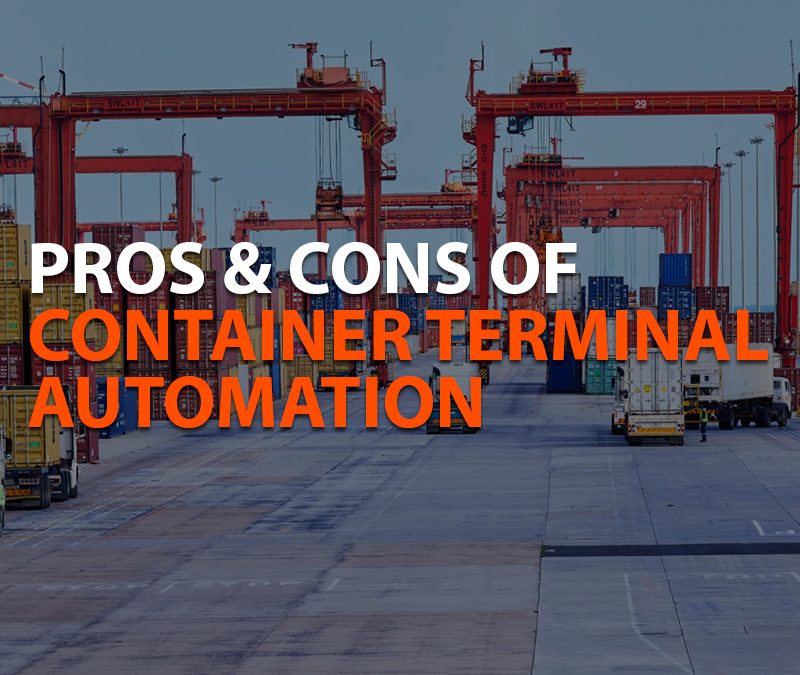In the rapidly evolving landscape of global trade, container terminal automation has emerged as a transformative force, reshaping the way goods are handled and processed. However, this technological leap forward brings both benefits and challenges to the forefront. Let’s delve into three key advantages and disadvantages of container terminal automation, highlighting the complexities of this revolutionary shift.
Pros of Container Terminal Automation:
Enhanced Efficiency and Precision are a big pro on the economic view of this subject. Automation equips terminals with cutting-edge technology, enabling precise and efficient cargo handling. Automated systems, guided by advanced algorithms, can optimize container placement, leading to faster loading and unloading processes. This heightened efficiency translates into reduced turnaround times and enhanced operational productivity.
On the human side, Improved Safety Standards benefit workers on the terminal. Automation significantly reduces the risks associated with human error and fatigue. By minimizing the need for manual intervention in high-risk tasks, terminals can enhance safety standards within their operations. Automated machinery, equipped with sensors and real-time monitoring capabilities, can swiftly identify and respond to potential hazards, ensuring a safer working environment for employees.
As an extra, automated systems are often designed with environmental considerations in mind. Electric-powered handling equipment and optimized operations contribute to reduced carbon emissions and overall environmental impact. By embracing automation, terminals can align their operations with eco-friendly practices, making strides towards a more sustainable future.

Cons of Container Terminal Automation:
Implementing automation requires a substantial initial investment in technology, infrastructure, and workforce training. Overcoming the challenges associated with integrating new technologies into existing systems can be complex and time-consuming. Terminals must navigate this initial hurdle to fully leverage the benefits of automation.
That investment may lead to workforce displacement, raising concerns about job security for existing employees. Additionally, the emergence of automation creates a demand for a different skill set. Ensuring a smooth transition for the workforce, including retraining and upskilling programs, is essential to mitigate these challenges.
We should also take into account that automated systems, while efficient, require regular maintenance to function optimally. Downtime for maintenance and repairs can disrupt operations, impacting productivity and causing delays. Managing maintenance schedules and minimizing downtime risks are critical aspects that terminals must carefully consider.
How do you think those new technologies would affect container terminals?






